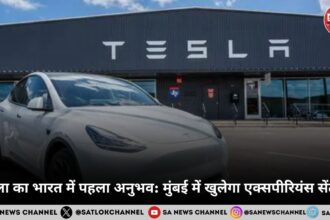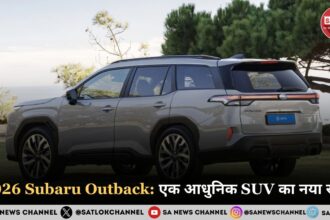Does putting machines in the driver’s seat truly benefit us? As the dust settles on years of testing and billions of dollars in investment on autonomous vehicles, a critical question remains unverified – have autonomous vehicles actually delivered on the promised safety? This article explores the full spectrum of autonomous vehicle technology, how it works, where it’s being used, the real-world benefits, limitations, and the complex ethical and legal challenges they bring along.
- Autonomous Vehicles Highlights
- What Are Autonomous Vehicles?
- How Do Autonomous Vehicles Work?
- Applications of Autonomous Vehicles
- Passenger Transportation
- Logistics and Freight
- Public Transport
- Agriculture
- Mining and Construction
- Defence Systems
- Benefits of Autonomous Vehicles
- Global Progress and Policy
- India and Autonomous Vehicles Technology
- Challenges and Drawbacks
- Technical Limitations
- Cybersecurity Risks
- Legal and Regulatory Hurdles
- Job Displacement
- Cost of Development and Deployment
- Accidents of Autonomous Vehicles
- Ethical and Moral Dilemmas
- Where Science Fails, the Complete Saint Prevails
- Autonomous Vehicles FAQs
Autonomous Vehicles Highlights
- Autonomous vehicles were originally designed to reduce or eliminate human errors, thereby reducing accidents.
- However, crashes by autonomous vehicles are a reality demanding reassessment of the road ahead for AVs.
- As per Craft Law Firm, the nature of crashes of autonomous vehicles reveal they crashed majority of the time either into fixed objects, or into passenger cars.
- India has also forayed into the Autonomous Vehicles Technology by focussing on building indigenous defence systems.
- How reliable is the ‘sophisticated’ autonomous vehicles technology when faced with life-threatening situations?
What Are Autonomous Vehicles?
These vehicles, commonly referred to as self-driving, utilise high-tech components to drive themselves without human intervention. It essentially means that the car is built with relevant software and hardware that enables it to drive without human interference, with an aim to minimise human errors.
These vehicles use a combination of sensors, cameras, radar, LiDAR (Light Detection and Ranging), artificial intelligence (AI) and machine learning algorithms to perceive their surroundings, interpret traffic signals, follow road rules and make driving decisions in real-time.
The autonomy of these vehicles is measured using a six-level classification system defined by the Society of Automotive Engineers (SAE). The SAE released these guidelines in 2014 and have been widely accepted as the standard in the autonomous automotive industry:
Image Source: Synopsis
- Level 0: No automation level. The human driver controls everything, in simple words, this is our manual driving cars.
- Level 1: Driver Assistance level. Such cars are equipped with basic features like adaptive cruise control. These features help the driver with speed control and maintain safe distance through the driver assistance software, however, braking and steering the car is his responsibility.
- Level 2: Partial Automation level. The vehicle can control steering and speed simultaneously in such automation systems, but the driver must remain attentive to take back control if the situation demands so. This means, though the machine steers its way, it cannot be fully relied upon.
- Level 3: Conditional Automation level. In some conditions, the car operates autonomously, though it relies on the driver to regain control when necessary. The difference between level 2 and 3 is that level is more technologically-equipped and such cars can provide better safety responses.
- Level 4: High Automation level. In defined settings, the car can operate on its own, though a human driver remains able to assume control when necessary. This level of automation has succeeded in operating cars in areas where the speed limit is 30mph at the maximum. Therefore, there are still limitations to the situations where the car can self drive.
- Level 5: Full Automation level. The car can operate independently in all environments without any human input. These can also provide all kinds of input like speeding, braking, turning etc.
While some Level 2 and Level 3 features are currently available in modern vehicles, full autonomy (Level 5) remains under development and rigorous testing.
How Do Autonomous Vehicles Work?
Autonomous vehicles rely on a complex integration of multiple technologies, namely:
- Sensors: Ultrasonic sensors detect nearby objects such as curbs, pedestrians and vehicles. Sensors are placed at several strategic places in autonomous vehicles, including the wheels.
- Cameras: Provide visual input to identify road signs, traffic lights, lanes and various obstacles.
- Radar: Radar sensors help identify the location and movement speed of surrounding objects, and are particularly useful when visibility is reduced due to bad weather. Radar devices are typically installed at the front of an autonomous vehicle.
- LiDAR: Offers precise 3D mapping by bouncing lasers off surrounding objects, enabling the car to build a real-time environment map.
Image Source: Cloudfactory
- GPS and IMU (Inertial Measurement Unit): Aid in accurate navigation and positioning. This GPS is the same we used to navigate roads.
- AI and ML: Artificial intelligence and machine learning form the backbone of autonomous vehicles, enabling them to process complex data and respond instantly to changing road conditions.They interpret sensor data, make decisions and predict or preempt how other road users will behave.
- Connectivity: V2X (Vehicle-to-Everything) technology is an important part of autonomous vehicles as it helps in communication, allowing the vehicle to interact with infrastructure and other vehicles to improve situational awareness.
V2X communication can be understood in-depth through this video:
Applications of Autonomous Vehicles
Autonomous vehicles have diverse applications across multiple sectors. Here are some real-world examples:
Passenger Transportation
- Waymo: Operates under Alphabet Inc., the same corporate umbrella as Google. It operates a fully autonomous ride-hailing service in part of the United States of America, such as Phoenix, California, Austin, Miami, Texas and Florida. Though, residents in parts of California have expressed frustration over the noise levels produced by Waymo’s autonomous fleet.
- Cruise: Now completely acquired by General Motors, is currently testing robotaxis in San Francisco and other urban areas. Though it is worth noting that despite Cruise being autonomous, the car service will be rolled out with a driver in place, just in case human intervention is required to avoid any accidents. This move comes post Cruise crash in San Francisco.
- Tesla offers Autopilot and Full Self-Driving (FSD) features. It is also about to roll our limited robotaxis following the suit of Waymo. Though Tesla claims that its self driving cars are fully self driven, there have been contradictory reports stating they are partially teleoperated.
Logistics and Freight
- TuSimple and Aurora Innovation are developing autonomous trucks aimed at long-haul freight. By reducing the need for driver rest times, these trucks are expected to significantly increase delivery efficiency.
- Aurora has recently rolled out commercial trucks in Texas that are autonomous. These are functioning on level 4 autonomous technology.
- TuSimple is also working on autonomous vehicles equipped with level 4 technology, in Japan and the United States of America.
- Gatik AI provides autonomous delivery services for short-haul logistics. It partners with companies like Walmart and Loblaw for B2B deliveries. Isuzu Motors Ltd. is a big investor in Gatik AI.
Public Transport
In cities like Helsinki (Finland) and Lyon (France), autonomous shuttle buses are being tested to improve last-mile connectivity and reduce operational costs in public transport systems. Not just in Europe, but even in the USA, more than 1400 autonomous vehicles are currently being tested for public transportation.
Also Read: Smart Cities Vs. Traditional Cities: The Revolution You Can’t Ignore
Agriculture
- Companies like John Deere and CNH Industrial have introduced autonomous tractors and harvesters capable of operating without a driver. Their primary aim is increasing productivity and precision in farming.
- Not just autonomous tractors, the farming industry is also slowly deploying robotic harvesters, autonomous sprayers and spreaders.
Mining and Construction
- Rio Tinto, a global mining corporation, employs autonomous haul trucks and drilling systems in its Australian mining sites. The introduction of AVs was primarily due to wanting to improving safety and efficiency.
- Caterpillar uses autonomous machines in large-scale construction and mining operations to enhance output and worker safety.
Defence Systems
The greatest example of autonomous vehicles used in warfare is India’s indigenous Akashteer, a fully automated Air Defence Control and Reporting system.
Image Source: PIB
- Built with sophisticated systems like the 3D tactical control Radars, REPORTER (a tactical control Radar, Radar of Akash Weapon System and Low level light weight Radar, the Akashteer successfully intercepted incoming attacks from Pakistan.
- Akashteer has been recognised by the Indian government as a crucial advancement in the country’s automated air defence strategy.
Benefits of Autonomous Vehicles
Many experts predict that self-driving technology could lead to various improvements, such as:
Enhanced Road Safety
Research shows that more than 90% of traffic collisions result from errors made by drivers. AVs are believed to eliminate issues like drunk driving, fatigue, distraction and slow reaction times, potentially saving thousands of lives each year. However, the AVs have not been without their share of accidents, raising questions on their safety.
Increased Mobility
Autonomous vehicles can offer freedom of movement to the elderly, disabled and non-drivers, improving their quality of life. However, given that AVs are very expensive, their reach and affordability are serious questions to be addressed.
Efficiency and Reduced Congestion
By communicating with one another, AVs can adjust driving behaviours in real time. Smart coordination could also lead to smoother traffic flows with fewer bottlenecks. The challenge here is that autonomous public transport needs roads that are better urban-planned, that otherwise, may pose deeper challenges.
Environmental Impact
When combined with Electric Vehicle (EV) technology, AVs may significantly reduce the carbon footprint and emissions of road transport. On the flip side, as commute becomes easier, it is projected that the number of travellers will increase. This will, in turn, contribute again to the overall carbon footprint.
Global Progress and Policy
Different countries are at varying stages of AV development:
- The United States: Has several autonomous vehicle testing hotspots, with California, Arizona, and Texas leading the way Especially Texas because of very relaxed AV-driving rules. Regulatory frameworks vary at the state level.
- China: Companies like Baidu and Pony.ai are leading AV trials in cities like Beijing and Shanghai.
- Germany: Is well-known for automotive excellence. Germany has passed legislation in 2021 to allow Level 4 vehicles on public roads under specific conditions.
- United Kingdom: The UK government aims to have self-driving vehicles on some roads by 2026, and it has established the Centre for Connected and Autonomous Vehicles (CCAV) to spearhead innovation and policy development.
Image Source: StartUs Insights
This heat map above indicates the presence of startups in the autonomous vehicles industry. The USA and the UK lead this list. India can be seen as an emerging centre of startups in the autonomous automotive industry.
India and Autonomous Vehicles Technology
While India is still in the early stages of adopting self-driven cars for public use, it is making significant strides in the development and deployment of autonomous vehicle technologies, especially in defence and research sectors.
- The country’s growing focus on self-reliant defence solutions has led to the creation of advanced systems such as Akashteer, an automated air defence control platform that integrates radar and missile systems for real-time threat detection and response.
- This is part of a broader effort to modernise India’s defence forces through autonomous and AI-powered systems.
- Beyond military applications, India is also building a robust ecosystem to support the research, testing, and deployment of autonomous mobility technologies.
- A major milestone in this journey is the establishment of TiHAN (Technology Innovation Hub on Autonomous Navigation) at the Indian Institute of Technology Hyderabad (IIT-H). TiHAN is India’s first dedicated testbed for autonomous aerial and terrestrial vehicles, and it aims to accelerate innovation across both defence and civilian sectors.
- A key contributor to this effort is ANRA Technologies Pvt. Ltd., a New Delhi-based company specialising in mission management and operational solutions for uncrewed vehicles. ANRA recently completed a large-scale technology integration project at the TiHAN facility, as part of a contract awarded by IIT Hyderabad.
Image Title: Dr. Jitendra Singh delivered remarks during the inauguration of the TiHAN testbed.
Image Source: PIB Press Release, 4th July 2022
- The company’s involvement focuses on strengthening TiHAN’s capabilities in autonomous vehicle traffic management, airspace surveillance, and data integration.
- Aside from this, the DRDO has successfully tested its indigenous Autonomous Flying Wing UAV at Chitradurga, Karnataka, as reported in a PIB press release, dated 15th December 2023. The move marks India’s growing expertise in stealth and autonomous defence technologies.
Challenges and Drawbacks
Despite their promise, autonomous vehicles face several critical issues that must be addressed before widespread adoption becomes feasible.
Technical Limitations
Autonomous Vehicles technology is not full-proof to errors. It can underperform, for example in cases like:
- Sensor Accuracy: Sensor precision can be compromised during extreme weather conditions such as dense fog, heavy rainfall, or snowfall, affecting the vehicle’s ability to detect its surroundings accurately This can majorly affect vehicle perception.
- Edge Cases: Unusual or unpredictable scenarios like a pedestrian dressed in a costume, road construction or even erratic cyclists still pose major challenges to autonomous vehicle technology.
- Infrastructure Readiness: Many roads are not adequately marked or equipped to support AV navigation. Urban planning that suits autonomous vehicles is believed to give better results, whereas, in spaces that lack such urban planning, the functionality and effectiveness of AVs is impacted.
Cybersecurity Risks
Cybersecurity continues to remain the biggest concern emerging from any advancing technology.
- Connected autonomous vehicles are vulnerable to hacking, data breaches and malicious attacks.
- This can potentially endanger passengers and public safety.
Legal and Regulatory Hurdles
There are many regulatory questions that are still unanswered.
- Who is liable in the event of a crash. Is it the manufacturer, software developer or the passenger?
- Governments worldwide are still struggling to craft regulations that balance innovation with public safety.
- Insurance, licensing, and road use policies must be redefined.
Job Displacement
The adoption of autonomous vehicles could threaten millions of jobs, especially in sectors like trucking, taxi driving, delivery and other logistics services. Transitioning the workforce will require robust retraining and extensive social support programmes.
Cost of Development and Deployment
Building, testing and deploying AVs is very expensive. Many companies are burning through billions in R&D, and profitability still remains a challenge. For example, a sturdy enterprise like Uber sold its self-driving unit due to high costs and slow progress in December 2020.
Accidents of Autonomous Vehicles
Autonomous vehicles were developed in the first place to minimise human errors and avoid accidents. However, Craft Law Firm reported the total number of accidents of autonomous vehicles from 2019 until mid 2024 was 3,979.
- Tesla Inc. had the highest number of accidents among all AV companies surveyed.
- The number of accidents by Tesla AVs were as many as 2,146.
- Following Tesla were Waymo LLC, General Motors LLC and Cruise LLC
Image Courtesy: Craft Law Firm
- Out of all the accidents that occurred until now, 496 persons were either injured or succumbed to death.
Image Courtesy: Craft Law Firm
- What is perplexing is to understand how autonomous vehicles collide with barely any human interaction?
Ethical and Moral Dilemmas
In an age where technological innovation outpaces ethical reflection, we often find ourselves creating more complex problems than we solve. Autonomous vehicles are a case in point. These machines, powered by algorithms, are now expected to make split-second decisions during unavoidable accidents. But in critical moments, what should take precedence – the safety of the passenger or the lives of those outside the vehicle?
- This moral dilemma echoes the famous Trolley Problem, a thought experiment where one must choose between allowing a trolley to kill five people on one track or diverting it to another, where it will kill just one.
- Though originally philosophical, this hypothetical scenario now has real-world urgency. Self-driving cars face similar choices – either protect the individual inside the vehicle or sacrifice them to save a group on the street?
- These are not just technical challenges, they are ethical minefields, forcing us to confront uncomfortable truths about human values and responsibility.
- What was once a philosophical thought experiment ‘the Trolley Problem’ has now become a real-world ethical dilemma in the development of autonomous vehicles.
- Who decides the algorithm’s moral compass? Whose life holds more value? And who bears the burden of that decision – should it be the programmer, the manufacturer or society itself?
But the implications run deeper. The very fact that we entertain such moral trade-offs reveals the erosion of human empathy. We’ve come to a point where we rationalise the loss of one life to save many, as if human lives are data points on a moral spreadsheet. The Trolley Problem is not just about machines choosing whom to kill, instead, it mirrors the cold calculations our society has normalised.
But, could there ever be a solution to the Trolley problem in real life? Yes, and it lies not in code or computation, but in spiritual wisdom. The answer to life’s most painful dilemmas, including the Trolley Problem, rests with a Tatvdarshi Saint—a Complete Saint Who possesses the divine knowledge to guide humanity beyond moral confusion. This is not another theory or thought experiment. It is a living truth, offering clarity, compassion and a path forward in a world increasingly devoid of both.
As we program machines to make moral choices, perhaps it’s time we reprogram ourselves and to seek answers not just in artificial intelligence, but in absolute spiritual intelligence.
Where Science Fails, the Complete Saint Prevails
No ADAS. No ADS. No airbags. No collision-avoidance system. Nothing in the jurisdiction of modern safety can match the unshakable, divine protection offered by a Tatvdarshi Sant (a truly Enlightened Saint). At first glance, this may seem unrelated. But in truth, it is deeply, spiritually intertwined with life itself.
The innovation in technology for self-driving vehicles is designed with the primary aim of preventing loss of lives, and to save lives. But here’s the truth no machine can override: when your fixed number of breaths that are preordained at birth, come to an end, even the most advanced systems will fail. No technology can stop death.
Only one power in the universe can cancel destiny, extend life and even bring the dead back – the Complete Saint, the divinely authorised messenger of Supreme God Kabir, the eternal Creator of all souls and infinite universes. This is not fantasy. This is a truth experienced firsthand by the followers of Jagatguru Tatvdarshi Sant Rampal Ji Maharaj, recognised as the only Complete Saint guiding humanity today.
Time and again, His devotees testify to miraculous protection delivered through His divine refuge from fatal accidents, terminal illnesses, financial collapse and sudden tragedies. His Grace has proved mightier than medicine, quicker than machines, and more precise than any algorithm ever written.
Sant Rampal Ji Maharaj has revealed that true worship of Supreme God Kabir, performed under the exact guidance of a Tatvdarshi Saint and in strict accordance with the rules of worship, shields a devotee from even the most incurable diseases and unavoidable dangers.
Supreme God Kabir has immortalised the power of His chosen Sat Guru (Complete Saint) in the following verses:
Masa ghate na til badhe, Vidhina likhe to lekh |
Sachha Satguru met Ke, Upar mare Mekh ||
Where safety technologies may reduce harm, Sant Rampal Ji Maharaj’s divine protection eliminates it altogether; prevents it before it even manifests, alerts His devotee, and steers them away from the gravest of catastrophes in ways beyond human comprehension.
So, while the world looks to machines to protect them from death, those who follow the Eternal Truth look to the one Who can conquer death itself.
Experience this divine assurance, not as an idea but as living proof. Witness it in the spiritual discourses of Sant Rampal Ji Maharaj and the countless lives He has transformed.
Autonomous Vehicles FAQs
Q1: What Does autonomous vehicles mean?
Answer: They are vehicles that don’t need human interference and can self drive.
Q2: What innovative systems and advancements are shaping the next generation of self-driving vehicles?
Answer: There are many, for example LiDAR, ADAS, computer vision, etc.









